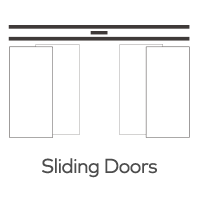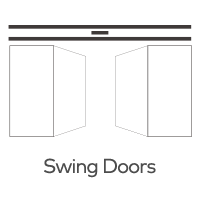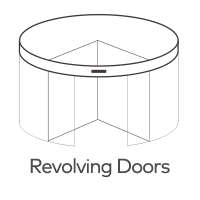Are There Any Limitations to the Range or Angle of Detection for Laser Safety Sensors in Automatic Doors?
Laser safety sensors play a critical role in ensuring the safe and efficient operation of automatic doors. These sensors use laser beams to detect obstacles and movement, preventing accidental closures and enhancing accessibility. However, despite their advanced technology, laser safety sensors have limitations related to their range and angle of detection. Understanding these constraints can help in selecting the right sensor for a specific application and optimizing its performance.
1. Limitations in Detection Range
The range of a laser safety sensor refers to the maximum distance it can effectively detect objects. Several factors influence this range:
- Manufacturer Specifications: Different sensors have varying detection ranges, typically between a few meters to over 10 meters.
- Environmental Conditions: Dust, fog, rain, and strong sunlight can reduce detection range by diffusing or reflecting laser beams.
- Object Reflectivity: Highly reflective or transparent objects (such as glass) may cause inaccurate detection or limit the sensor’s ability to detect them.
- Power and Sensitivity Settings: Some sensors allow adjustable detection ranges, but incorrect calibration can lead to reduced effectiveness.
2. Limitations in Detection Angle
The angle of detection determines how wide an area a laser sensor can cover. Some common limitations include:
- Narrow Field of View: Many laser safety sensors are designed with a specific angle range, often between 30 to 180 degrees. A narrower angle may not cover a wide enough area, increasing the risk of blind spots.
- Obstructions and Installation Constraints: Physical barriers such as door frames, walls, or signage can block laser beams, limiting the effective angle of detection.
- Mounting Position: The height and placement of the sensor impact its detection angle. Improper positioning may create gaps in coverage.
- Multi-Beam Overlap Issues: Some sensors use multiple beams for enhanced coverage, but overlapping beams may result in false triggers or misdetection.
3. Ways to Overcome Range and Angle Limitations
To maximize the performance of laser safety sensors and mitigate range and angle limitations, consider the following strategies:
- Choose the Right Sensor: Select a sensor with an appropriate detection range and angle for the specific application.
- Optimize Sensor Placement: Position the sensor at a height and angle that maximizes coverage and minimizes blind spots.
- Use Multiple Sensors: In larger doorways or areas with complex layouts, combining multiple sensors can improve coverage.
- Regular Maintenance and Calibration: Clean sensor lenses, check alignment, and adjust sensitivity settings to maintain accuracy.
- Consider Hybrid Detection Technologies: Some systems integrate infrared or microwave sensors alongside laser sensors to enhance detection reliability in challenging environments.
Conclusion
While laser safety sensors provide precise and reliable obstacle detection for automatic doors, they do have limitations in range and angle of detection. Understanding these constraints and implementing proper installation, calibration, and maintenance strategies can help overcome potential challenges. By selecting the right sensor and optimizing its setup, businesses can ensure safer and more efficient automatic door operations.







